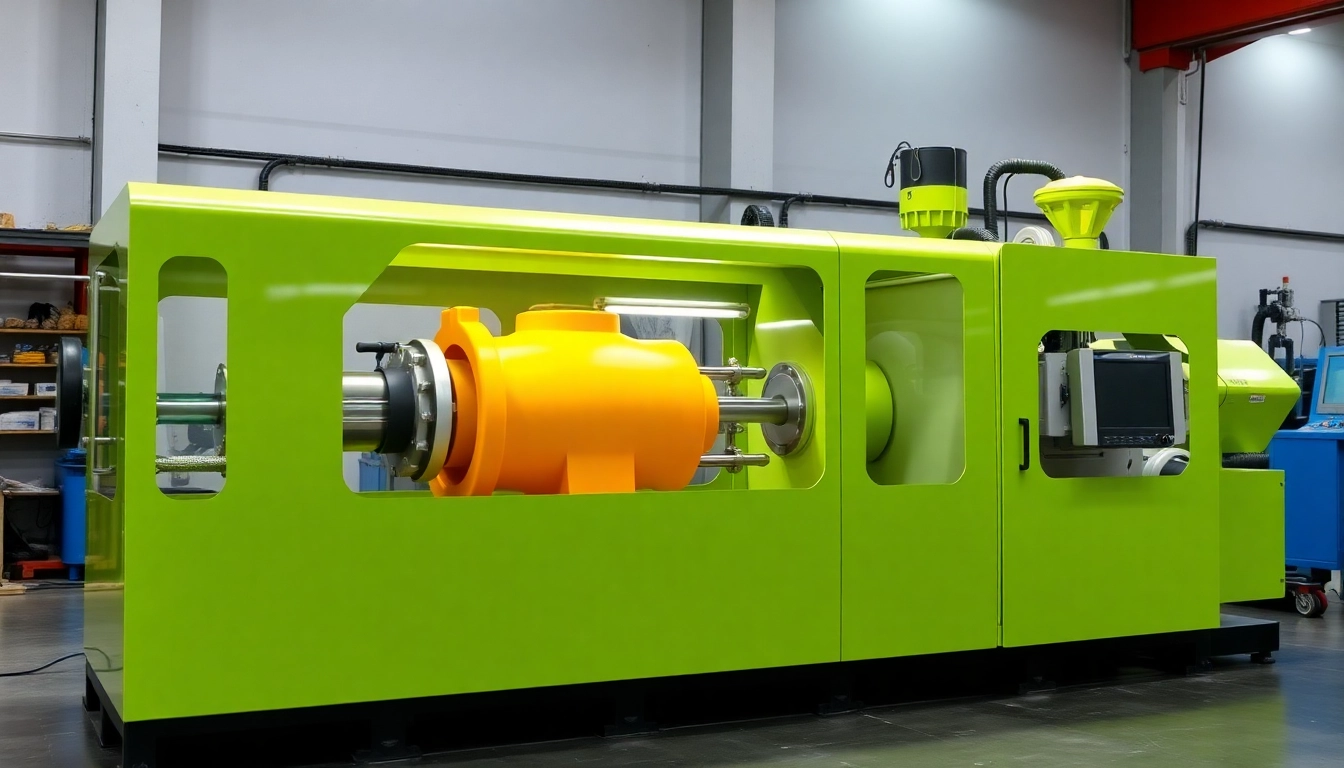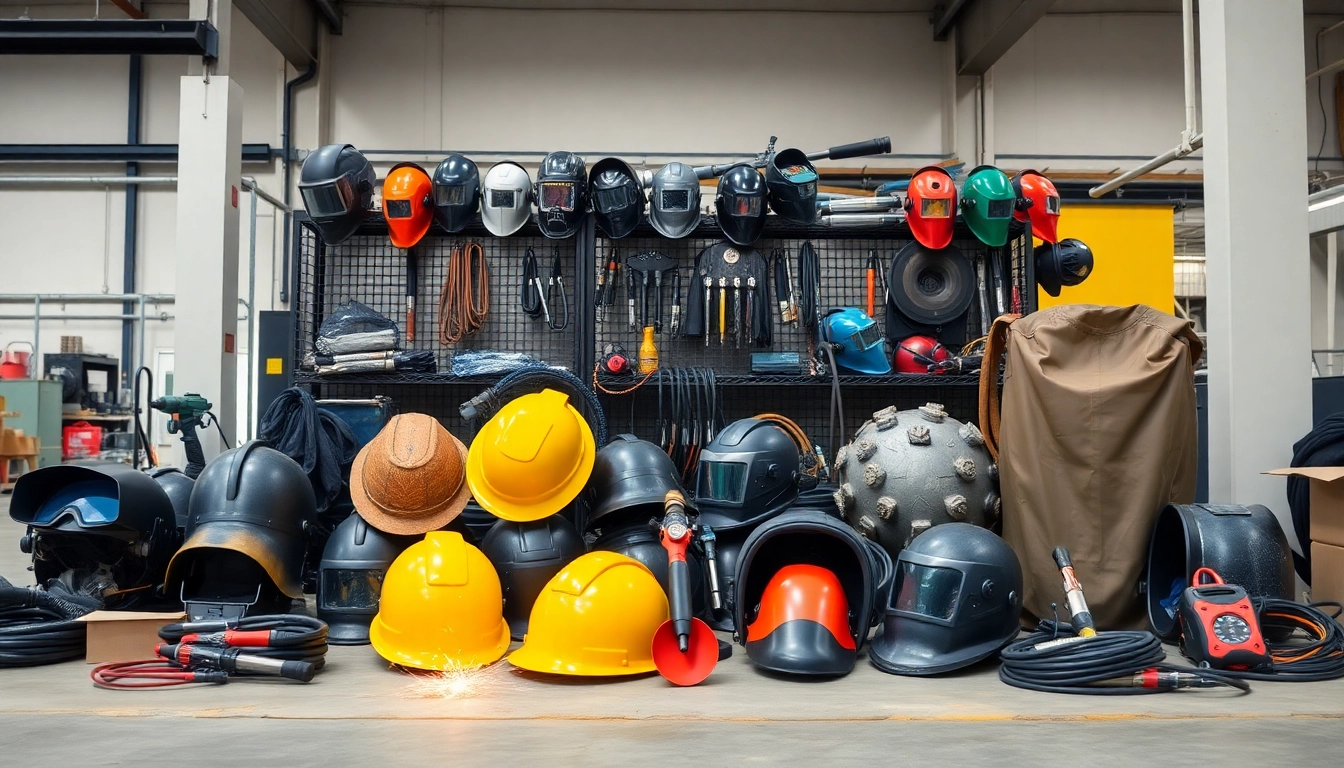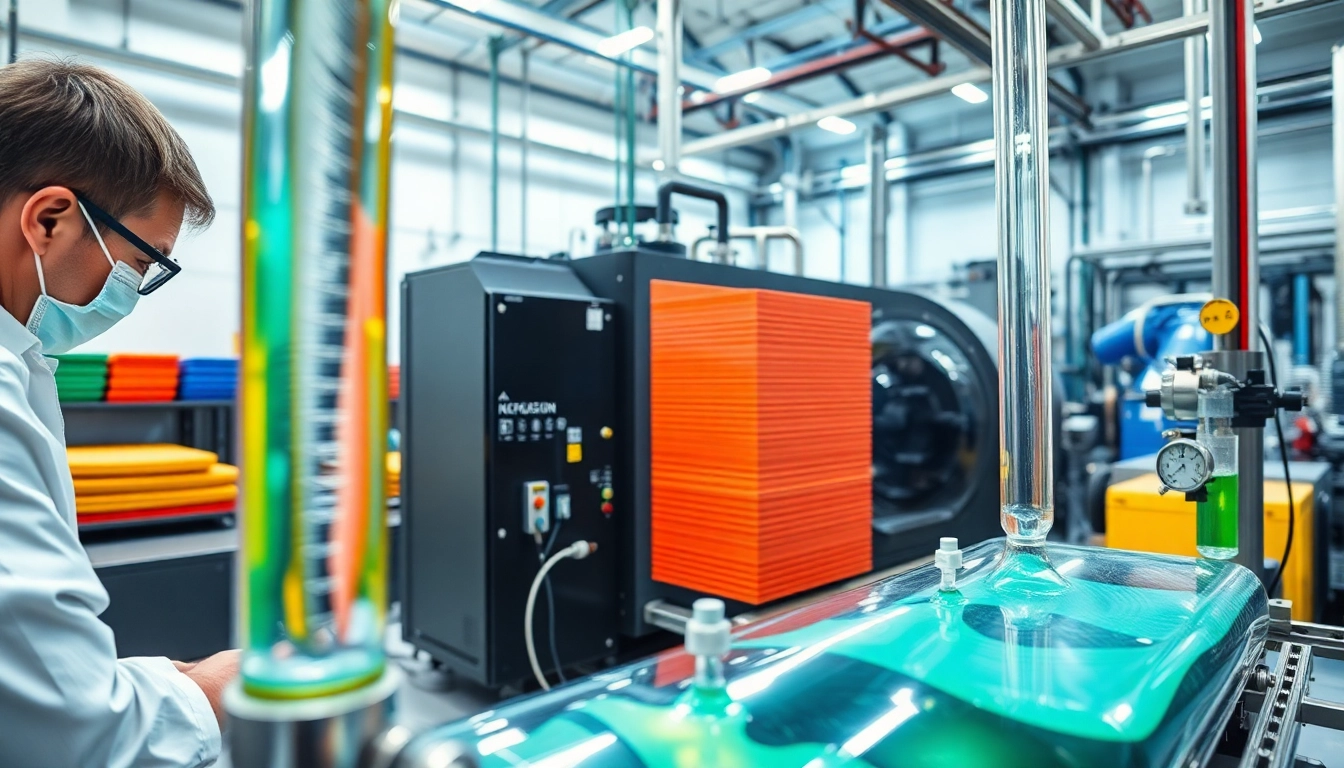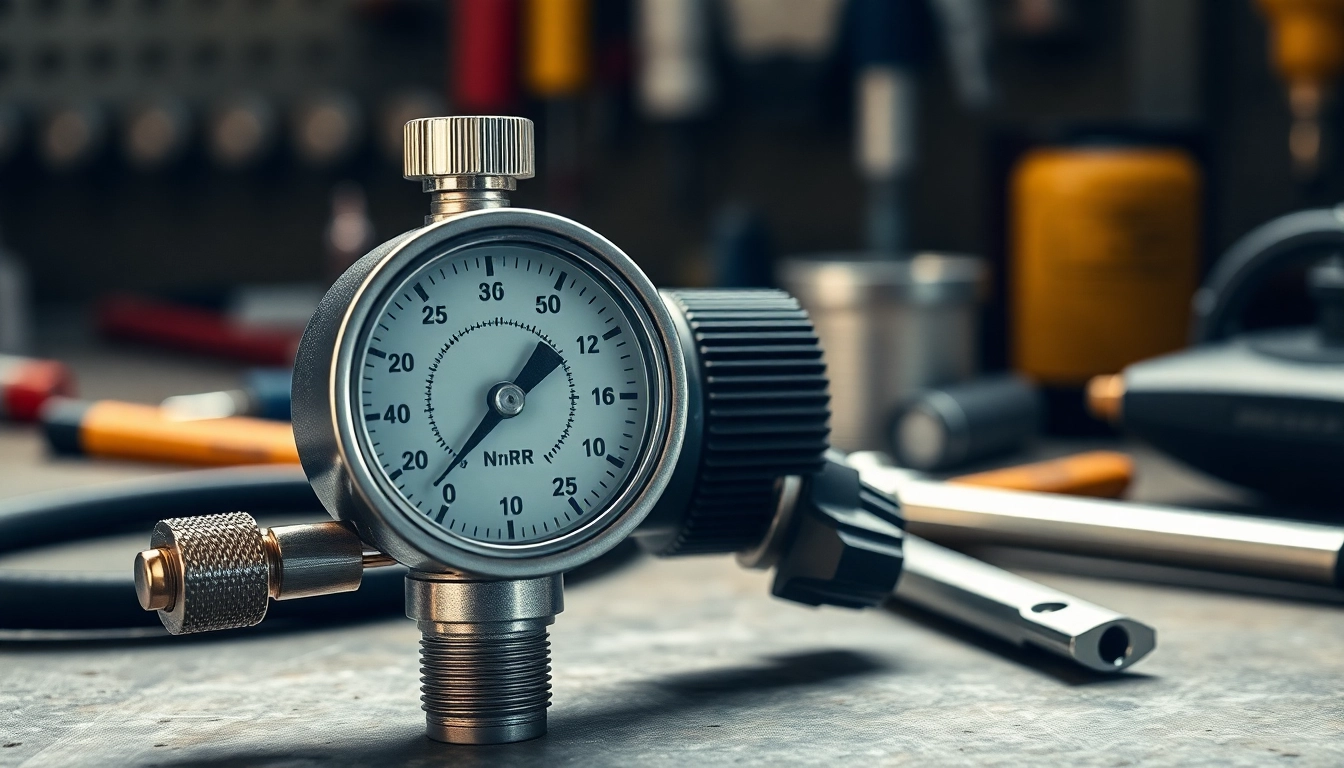Introduction to Blow Molding Machines
Blow molding machines are integral to the manufacturing of various plastic products, significantly shaping industries such as packaging. These machines produce hollow plastic parts in a seamless manner, making them essential for contexts where lightweight and sturdy containers are required. For instance, the majority of plastic bottles you encounter daily, from water to detergent containers, are typically manufactured using blow molding techniques. This process is primarily valued for its efficiency and ability to produce items with precise dimensions and excellent finish. If you’re looking to delve deeper into the specifics of a highly efficient manufacturing solution, check out this Blow Molding Machine.
What is a Blow Molding Machine?
A blow molding machine is an industrial apparatus that creates hollow plastic components through a process that involves forming a parison (a tube-like piece of plastic) and extending it into a mold with the help of air. The parison is typically made from materials such as polyethylene, polypropylene, or polystyrene, which are melted down and shaped into the desired form. The core function of the blow molding machine revolves around two critical stages:
1. Formation of Parison: This involves creating a tubular piece of plastic which is then cut to the desired sizes.
2. Blow Molding Process: Once the parison is secured into the mold, air is blown into it, expanding it until it fills the mold cavity. This is how manufacturers can create complex shapes that are hollow inside.
Types of Blow Molding Machines
Blow molding machines can primarily be categorized into three types, each catering to different production needs and specifications:
1. Extrusion Blow Molding (EBM): This is the most common technique used, where a continuous tube of molten plastic is extruded and then blown into the mold. EBM is popular for producing bottles and containers because it offers high production speeds and low material wastage.
2. Injection Blow Molding (IBM): In this method, a preform is first created using injection molding. After it has cooled, the preform is heated again before being blown into its final shape. IBM is advantageous for smaller items and those that require high precision and thickness uniformity.
3. Stretch Blow Molding (SBM): This variant is generally used for making PET bottles. After the preform is blown, it undergoes stretching, which enhances its molecular orientation, resulting in products with better mechanical strength.
Applications in Various Industries
The versatility of blow molding machines allows them to cater to multiple industries. Here are a few notable applications:
1. Packaging Industry: From bottles to containers, blow molding machines excel in creating lightweight and durable packaging solutions that meet rigorous quality standards.
2. Automotive Industry: Lightweight components produced through blow molding help improve fuel efficiency in vehicles. Parts such as fuel tanks and interior elements are often made using this technology.
3. Healthcare Sector: Medical bottles and containers that are sterile and safe for pharmaceutical uses are often manufactured with blow molding, ensuring high-quality and safety standards.
4. Consumer Goods: Toys, household items, and gardening products take advantage of blow molding for their production due to its efficiency and versatility.
Understanding the Blow Molding Process
To fully appreciate the capabilities of blow molding machines, it’s essential to understand the intricate process involved.
Step-by-Step Overview of Blow Molding
Here’s a brief outline of the blow molding process:
1. Material Preparation: The plastic material is fed into the extruder where it is melted to form a parison.
2. Formation of the Parison: As the molten plastic exits the extruder, it is shaped into a tube or parison.
3. Molding: The parison is then clamped into a mold. For IBM, this mold is shaped from a preformed bottle, while for EBM, the mold could vary based on the required shape.
4. Blowing: Compressed air is blown into the parison, causing it to expand and take the shape of the mold.
5. Cooling and Ejection: The molded product is cooled to solidify and then ejected from the mold for further processing or packaging.
Comparison with Other Molding Techniques
While blow molding serves specific needs, other plastic molding techniques also have their advantages:
– Injection Molding: This method allows for more complex designs and is better suited for solid parts. It excels in production efficiency for small items with high detail.
– Compression Molding: Primarily used for thermosetting plastics, this technique is less efficient for hollow parts but works well for thicker designs.
The primary takeaway is understanding that the effectiveness of blow molding lies in its suitability for hollow components, making it ideal for industries that heavily rely on plastic containers.
Common Challenges in Blow Molding
Despite its advantages, blow molding does face challenges:
1. Material Selection: Not all materials are suitable for blow molding. Thermoplastics work best, while brittle or thermosetting plastics can cause complications.
2. Mold Designing: A poorly designed mold can lead to defects and wastage, affecting the overall production efficiency.
3. Maintenance Requirements: Blow molding machines can be prone to wear and tear, necessitating regular maintenance to ensure optimal operation.
4. Environmental Concerns: The industry is under pressure to employ sustainable practices, leading to the need for more eco-friendly materials and processes.
Key Features of Modern Blow Molding Machines
Technological advancements have significantly enhanced the functionality and efficiency of blow molding machines. Below are key features that modern machines possess:
Energy Efficiency and Sustainability
Recent innovations focus on reducing energy consumption during the molding process. For instance, servo-driven systems are being implemented to enhance precision and decrease energy waste, making machines more sustainable.
Furthermore, the development of bio-based plastics has paved the way for more eco-friendly alternatives that do not compromise on quality or performance. As pressure increases for manufacturers to adopt sustainable practices, investing in energy-efficient machines has become a priority.
Technological Advancements in Automatic Controls
Modern blow molding machines come equipped with advanced control systems that allow for great automation. These systems can monitor the production process in real-time, adjusting parameters such as temperature and pressure for optimal efficiency. By utilizing Industry 4.0 technologies, including IoT integration, manufacturers can enhance predictive maintenance capabilities and improve overall production monitoring.
Customization and Versatility
Today’s blow molding machines offer enhanced customization options. Manufacturers can modify the machines to adjust for different sizes, shapes, and materials, leading to an expansive range of applications. This adaptability is particularly valuable in sectors such as consumer goods, where product variety is crucial.
Choosing the Right Blow Molding Machine
Selecting the appropriate blow molding machine is critical for optimizing production efficiency. Several factors should be taken into consideration.
Factors to Consider for Optimal Performance
1. Production Volume: Understand your production needs; high-volume production may necessitate an automated setup, while lower volumes can work with semi-automatic machines.
2. Type of Product: The design and material of the products being manufactured should guide your choice of machine type; EBM vs. IBM vs. SBM.
3. Budget Constraints: Consider both initial acquisition costs and long-term operational costs, including energy consumption, maintenance, and potential downtime.
4. Space Availability: Ensure that your facility has adequate space to accommodate the machine and its layout for efficient operation.
Cost Analysis: Budgeting for Your Machine
The cost of blow molding machines can vary widely based on complexity and capabilities. For instance:
– Low-end machines tailored for small-scale operations may start at around $25,000.
– High-end industrial machines with automation may exceed $500,000, particularly with advanced features.
Careful planning and budgeting should take into account the long-term ROI to ensure that investments result in tangible benefits.
Top Manufacturers in the Market
When it comes to sourcing blow molding machines, several manufacturers are recognized for their reliable products and customer service. Some of the top names in the industry include:
– Wilmington Machinery: Known for high-speed monolayer and multilayer rotary extrusion blow molding machines.
– Parker: Offers a variety of blow molding machines globally, focusing on automatic production and low power consumption.
– Bekum: Famed for compact and electric blow molding machines, ensuring high quality and efficiency.
Researching these manufacturers and understanding their offerings is essential for making an informed decision.
Future Trends in Blow Molding Technology
The future of blow molding is bright, driven by an array of innovations aimed at improving efficiency, cost-effectiveness, and sustainability.
Emerging Innovations and Techniques
Next-generation blow molding machines are expected to incorporate smart technologies, including enhanced automation and robotics. These advancements will facilitate greater accuracy and speed, expediting production cycles while simultaneously reducing labor costs.
Moreover, bioplastics and recycled materials are anticipated to become standard in the manufacturing process, aligning with global sustainability goals and increasing demands for environmentally responsible production methods.
Sustainability Practices and Eco-Friendly Designs
Industries across the globe are adopting sustainability practices to minimize their carbon footprint. The shift towards the use of recycled materials and the implementation of closed-loop manufacturing processes is expected to dominate future blow molding operations. Furthermore, creating designs that facilitate recycling and reduce material usage through innovative shaping methods will become imperative.
Market Predictions and Industry Growth
As environmental regulations strengthen and consumer preferences shift towards sustainable products, market analysts project robust growth in the blow molding sector. Between 2023 and 2030, the demand for blow molded products is expected to grow, fueled by advancements in materials science and manufacturing technologies.
Investors and manufacturers who strategically align their operations with emerging trends will be best positioned to capitalize on the growth opportunities in this dynamic market.



